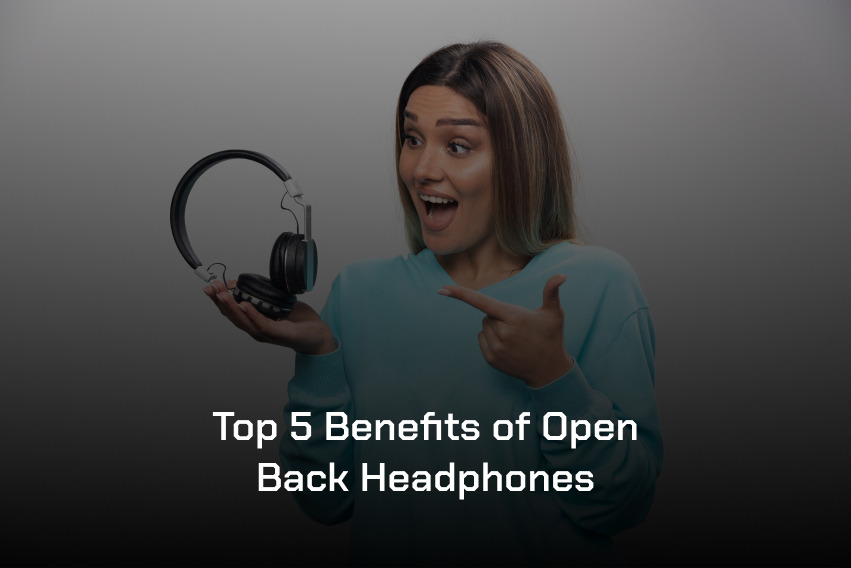Open back headphones offer a distinct audio experience, favored by many for their natural sound. By allowing air to pass through the ear cups, these headphones create an immersive soundscape that mimics high-fidelity speakers in an open room. Listeners enjoy heightened awareness of their surroundings without compromising on sonic quality.
While preferences vary between individuals, those who seek spacious acoustics and clear details may find open-back models particularly appealing despite being less ubiquitous than closed-back types. Such devices are designed with the audiophile in mind, aiming to provide a listening session akin to an acoustic concert hall atmosphere.
Natural Sound Experience
Open back headphones serve as a breath of fresh air in the audio landscape. Where their closed-back kin trap sounds, these allow it to flow freely through vented or mesh-lined ear cups. This design choice gifts listeners with natural acoustics akin to listening in an open space rather than inside four walls.
One notices this the most when enjoying music genres that thrive on organic resonance—classical pieces whisper and soar around you; jazz ensembles play across stages vast yet intimate. The outside world merges subtly with melodies, creating experiences rich and full-bodied. By not sealing off the ears completely, they also negate any sense of pressure often felt from enclosed designs—a blessing for sensitive eardrums craving breathing room between notes struck by strings or keys.
One must bear in mind the trade-off. Openness elevates sonic purity but sacrifices isolation. In noisy environments like chatty buses or blaring city streets, it might not shield against intrusive sounds.
No single pair rules supreme in all settings due to acoustic laws. Variety is key to choosing the right style. While less common compared to closed models today, those who seek rawer authenticity may find themselves reaching for open-backed options despite owning several already snugly tucked away at home.
Improved acoustic openness
Open back headphones boast improved acoustic openness, a feature that’s crucial for those who crave authentic sound. By design, these headphones lack solid outer covers on the ear cups. This allows air and sound to pass freely from speaker elements to the ears.
This results in minimal echo within the headphone space. Users often notice more subtle musical details with open-back designs as compared to closed models where sounds are confined. Ambient noises blend with music or audio content, which creates a sense of being in a larger room rather than having speakers pressed against one’s ears.
A technical advantage is lower diaphragm pressure, which means less distortion; hence, purer tones come forth, especially at high frequencies—think crisp highs without harshness or strain like found in some sealed counterparts. Moreover, this structure helps prevent the buildup of heat around the ears over long periods because airflow keeps listeners cooler during use—a small but meaningful perk for comfort and concentration while tuning into favorite tunes or podcasts. Additionally, such an arrangement can reduce resonance effects sometimes linked with closed cans, yielding cleaner output across various genres, whether it be classical symphonies requiring breathy instrumental separation or layered electronic tracks demanding clarity among synths and beats alike.
When considering fidelity paired with natural listening surroundings, improved acoustic openness stands out as an eminent benefit offered by open-back headphones, adding richness and depth, thus enhancing overall auditory pleasure substantially.
Enhanced Comfort for Extended Use
Open back headphones offer a distinct comfort advantage for those who wear them for long stretches. Their design allows for more air passage around the ears, keeping listeners cool and reducing sweat buildup, which is essential during extended periods of use. Without heat trapping around one’s head, there’s less discomfort, meaning people can enjoy their music or work without the urge to remove their headphones frequently.
Added to this is the weight factor: open-back models are typically lighter than their closed-back counterparts. Less weight means reduced pressure on both the ear and crown, bringing down any chance of strain even after hours of listening. What strikes most users is how natural these devices feel when worn—an attribute that heightens overall comfort levels significantly.
The sense they give off isn’t just about physical ease but also impacts user perception; it doesn’t weigh heavily on the mind either. When it comes to sound quality itself, which indirectly affects listener comfort too, open backs provide an introspective sound signature where midrange tones seem almost internalized within one’s thoughts rather than blasted into space outside. It creates a snappier rhythm section resonance with sharper transient details, likely prompting spontaneous movements like head nods along with beats.
As detailed nuances come through clearer without harshness or added echo effects common in enclosed designs, individuals find themselves settling into audio sessions longer because nothing sounds forced or unnaturally amplified straight against eardrums. Such features are designed carefully to prevent fatigue and enhance engagement. They pair prolonged comfort with rich sound for enthusiasts who love to immerse themselves in music for hours.
Accurate Soundstage Presentation
Open back headphones excel at accurate soundstage presentations. Their design allows for unimpeded sound wave travel through the ear cups, preventing echoes within the drivers. This openness reproduces audio with a sense of space and depth akin to hearing music live or as if one sits inside a professionally tuned studio.
Such spaciousness stems from their ability to deliver improved stereo imaging; listeners can pinpoint where each instrument is placed in a mix. It helps create an immersive experience that feels true-to-life rather than confined between the ears. Moreover, open-back models typically provide flatter frequency responses—a boon for critical listening tasks like mixing and mastering tracks—yielding balanced tones across lows, mids, and highs without the artificial boosts common in other headphone types.
In contrast, their closed-back counterparts offer isolation by sealing off external noise, which is perfect when privacy or quiet environments are needed. These qualities make them suitable for situations where leakage must be curtailed: recording sessions or crowded places come to mind. Each type serves distinct purposes based on listener needs regarding ambient noise presence versus accuracy desires during playback scenarios.
Reduced ear fatigue
Open back headphones offer a key advantage for users: reduced ear fatigue. When people wear closed-back models, the lack of ventilation often results in discomfort after prolonged use. Heat and moisture build up around the ears, which can lead to tiredness and even pain.
In contrast, open-back designs allow air to circulate freely. This helps keep the user’s ears cool and dry during long periods of listening—an essential factor for those who love music or need to focus when working with audio professionally. Without this added pressure on your ears, sessions can extend without experiencing fatigue that one might expect from traditional headphones.
Moreover, enthusiasts embarking on endurance challenges, like extensive training regimes or marathon gaming sessions, find this feature invaluable. Just as athletes prepare thoroughly before taking on physical feats and brace themselves for setbacks along their journey, so too should auditory equipment cater resiliently to its wearer’s needs over time. Users report feeling fresh even hours into using these headphones compared with more enclosed options, which trap heat against their skin, causing discomfort much earlier into the usage duration.
It’s clear then why many choose open backs for tasks demanding an extended attention span where maintaining mental sharpness remains crucial, whether they’re composing music tracks until late at night or pushing through final study revisions before exams. Careful consideration shows how vital it is that our gear supports us rather than hinders progress due to avoidable aches brought about by lower-quality design choices.
Open back headphones offer users a natural sound experience, allowing for more vivid audio that mimics live performances. The design promotes airflow, which reduces pressure on the ears and can enhance comfort during extended listening sessions. These types of headphones boast superior sound quality with greater depth and clarity at high frequencies compared to their closed-back counterparts.
They’re ideal for critical listening tasks because they provide an expansive soundscape where each note is distinct—a key preference among audiophiles and professional producers like those who visit JBZ Beats seeking pristine audio production elements.


